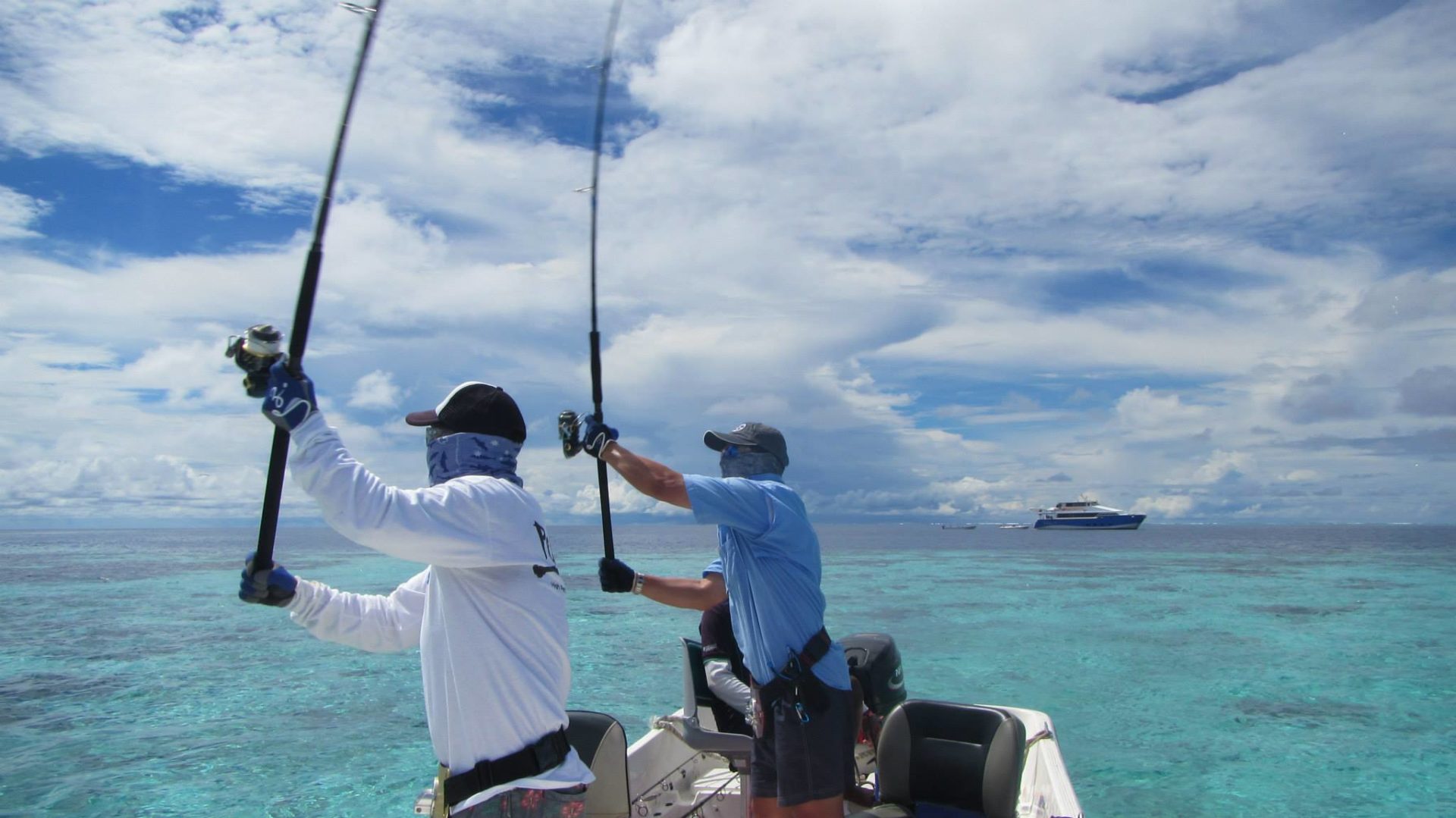Blue Bastard
FishingEarth is the home to the best Fishing Adventures on Earth, Full Stop!! We know the best locations the best guides and the best combinations of all your Fishing need. The team at FishingEarth knows the feeling of catching one of your ‘dream fish’… that anticipation the excitement, the moment when you hooked your first Marlin or the moment your Barramundi jumps and you realise you have hooked your first metre Barra! Whether you’re young or old, experienced or novice, on a budget or wanting to splash some cash, there is without doubt a FishingEarth experience here that will float your boat and give you a lifelong memory

How to book:
1) Browse through our fantastic range of destinations
2) Contact us on 0447 789 777 or email info@fishingearth.com
3) We will book your destination and provide you advise on what you need to bring
|
|
|
|
Fly fishing for blue bastards, a term that might raise eyebrows due to its colorful name, is an enthralling challenge many anglers are eager to undertake. These fish, more formally known as the Indo-Pacific permit (Trachinotus blochii), captivate the hearts of fly fishers around the globe with their elusive nature and fighting spirit. Embarking on this angling adventure requires not just patience and skill but also a profound understanding of the basics of fly fishing in saltwater environments. |
|
|
This journey begins with mastering the art of casting, which in the context of targeting blue bastards, means learning how to deliver flies accurately and delicately over considerable distances. Moreover, understanding the habitats these fish frequent—typically shallow, clear flats where they feed on crustaceans—enables anglers to better locate and target them. Equipping oneself with this foundational knowledge sets the stage for thrilling encounters with one of fly fishing’s most coveted species. |
|
|
|
|
|
In the diverse world of fly fishing, targeting blue bastards presents an exciting challenge for anglers. These elusive fish, primarily found in the shallow, clear waters of the Indo-Pacific region, including parts of Australia’s northern coast and some areas around the Seychelles, have garnered attention for their feisty nature and striking appearance. Blue bastards inhabit flats and estuaries, environments that offer a mix of sandy bottoms and seagrass beds where they can hunt and hide. |
|
|
This habitat preference makes sight fishing a preferred method for catching them. Physically, blue bastards are distinguishable by their robust bodies that shimmer with iridescent hues ranging from pale silver to a distinctive blue-green under sunlight. They possess a powerful tail that aids in swift movements through their shallow water realms. Mature individuals often showcase darker patches or bars along their sides, adding to their visual allure. |
|
|
Their large mouths are well-suited for feeding on crustaceans and smaller fish, making them formidable predators within their ecosystems. |
|
|
|
|
|
When gearing up for the unique challenge of fly fishing for blue bastards, a species known for its elusive nature and spirited fight, selecting the right equipment is crucial. A 9-foot, 8-weight fly rod is often recommended for its versatility and strength, capable of casting large flies and handling the vigorous battles these fish are known for. Paired with a quality saltwater reel that boasts a smooth drag system, anglers can manage the sudden runs and powerful pulls characteristic of blue bastards. |
|
|
The choice of line is equally important; a weight-forward floating line enhances casting accuracy in windy conditions commonly encountered in their habitats. Flies should mimic the crustaceans these fish prey on, with crab patterns being particularly effective. Durability in your flies is key as blue bastards can be tough on gear. Additionally, leaders and tippets should be strong enough to withstand sharp coral structures without compromising stealth. |
|
|
A fluorocarbon leader with a breaking strength of at least 20 pounds strikes a good balance between invisibility and durability. |
|
|
|
|
|
Successfully fly fishing for the enigmatic Blue Bastards, a name that belies the challenge and thrill of hooking one, requires a blend of technique and strategy. These elusive fish, often found in shallow tropical and subtropical waters, demand a stealthy approach. Anglers must master the art of sight fishing, where keen observation and patience are paramount. Spotting a Blue Bastard from a distance without spooking it involves moving quietly and using natural cover to your advantage. |
|
|
The choice of fly is critical; patterns that mimic small crabs or baitfish are particularly effective. Since Blue Bastards are notorious for their strong jaws, flies tied on robust hooks can make the difference between success and disappointment. Presentation is another key element; casts should be precise yet delicate to avoid alarming the fish. Once hooked, an angler faces a formidable fight. |
|
|
Keeping tension on the line while being prepared for sudden runs is essential to eventually landing these challenging adversaries. Incorporating these techniques and strategies significantly enhances the chances of successfully fly fishing for Blue Bastards. |
|
|
|
|
|
Fly fishing for blue bastards, a thrilling pursuit for anglers around the globe, is best experienced in locations where these elusive fish thrive. The expansive flats and pristine waters of Australia’s Northern Territory emerge as prime habitats, offering both a challenging hunt and rewarding catches. Here, the clear shallows not only provide perfect sight-fishing conditions but also boast a rich ecosystem that supports healthy populations of blue bastards. |
|
|
Venturing further abroad, the Indian Ocean islands present another haven for fly fishing enthusiasts. Locations such as the Seychelles have gained legendary status among the fly fishing community for their abundant blue bastard populations alongside other coveted species. The flats surrounding these remote islands offer an unparalleled experience with their untouched beauty and teeming marine life. |
|
|
Both destinations share common traits: vast, clear waters and robust conservation efforts that ensure sustainable angling adventures. Anglers seeking to test their skills against the cunning blue bastards will find these areas not just fruitful but also breathtakingly beautiful, merging the thrill of the catch with nature’s grandeur. |
|
|
|
|
|
In the realm of fly fishing, targeting species like the blue bastard involves more than just skill and patience; it necessitates a profound understanding of conservation and ethical considerations. These enigmatic fish inhabit fragile ecosystems that are often at risk from human activities, including overfishing and habitat destruction. As such, fly fishers must adopt practices that ensure not only the thrill of the catch but also the preservation of these species for future generations. |
|
|
Catch-and-release protocols are paramount in this regard. Utilizing barbless hooks minimizes injury to the fish, facilitating a swift and less stressful release back into their natural habitat. Moreover, anglers should be mindful of handling techniques to prevent undue harm, ensuring their aquatic adversaries suffer minimal exhaustion and exposure to air. |
|
|
Beyond individual practices, participating in conservation efforts and supporting regulations that protect marine habitats underscore the ethical responsibility held by those who pursue fly fishing for blue bastards. It’s about balancing our passion with sustainability, ensuring these remarkable creatures continue to thrive in their environments. |

